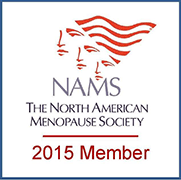Health Issues
Spider Veins
Are tiny blood vessels that are apparent on the skin’s surface, they are often found on the face or legs Their appearance is usually red, blue or purple in color; they look like a spider web or tree branch. Spider veins can be caused by the back flow of blood in the vein, as well as by hormonal changes, sun exposure, or injury.
Varicose Veins
Are swollen, twisted, enlarged veins, usually found in the lower legs and most commonly seen in women. The presumed cause of varicose veins (sometimes called varicosities), are ineffective valves. The valves in normal functioning veins are one directional, moving blood towards the heart and preventing the backflow of blood in the vessel. When these valves become ineffective, some blood starts to flow backwards, causing pooling in the vein. Varicose veins tend to affect nearly all aging adults at some point during their life due to weakening and stretching of the vessel walls. However, there is a higher incidence of varicose veins in people who stand on their feet for prolonged periods of time, such as teachers or nurses. Varicosities may also be due to conditions that exert increased pressure on the vascular system such as pregnancy or obesity.
Symptoms often associated with varicose veins are:
•Aching
•Cramping
•Burning
•Throbbing pain and discomfort
•Mild swelling and itching
•Unpleasant cosmetic appearance
At-home treatment for varicosities and spider veins include:
•Avoiding standing for prolonged periods of time
•Raising your legs when resting or sleeping
•Wearing elastic support hose/stockings
•Avoiding crossing your legs when sitting
For more severe forms of varicose veins, treatment includes:
Radiofrequency or laser ablation: A laser uses a highly concentrated beam of light to emit heat that damages the vessel. This creates scarring, causing the vein to close. The use of a laser can be superficial, which is appropriate for spider veins or tiny varicose veins that are just under the skin’s surface. Alternatively, an endovenous method may be used which involves the insertion of a small catheter into the vein, guided by ultrasound. When using this technique a local anesthetic and light sedative may be required during the treatment.
Sclerotherapy: This is the ideal treatment for smaller varicose veins. It involves injecting a sclerosant (usually a salt-based solution) directly into the vein to cause irritation and scarring to the vessel walls. Consequently, the vein collapses, resulting in the rerouting of blood through healthy veins. The scarred vessel eventually dissolves. Results will often be apparent in one month.
References:
HealthLinkBC. (2012). Laser Treatment for Varicose Veins. Retrieved from http://www.healthlinkbc.ca/kb/content/otherdetail/tn10097.html
Womenshealth.gov. (2010). Varicose veins and spider veins fact sheet. Retrieved from http://www.womenshealth.gov/publications/our-publications/fact-sheet/varicose-spider- veins.cfm
Mayo Clinic. (2013). Varicose Veins. Retrieved from http://www.mayoclinic.com/health/varicose-veins/DS00256
Emedicinehealth. (2013). Varicose Veins. Retrieved from http://www.emedicinehealth.com/varicose_veins/article_em.htm
PubMed Health. (2012). Varicose Veins. Retrieved from http://www.ncbi.nlm.nih.gov/pubmedhealth/PMH0002099/
By: Lauren Dawes
Nursing Education Program of Saskatchewan Student
February, 2013
Improving Women's Lives Through Better Health in Mid-Life and Beyond


